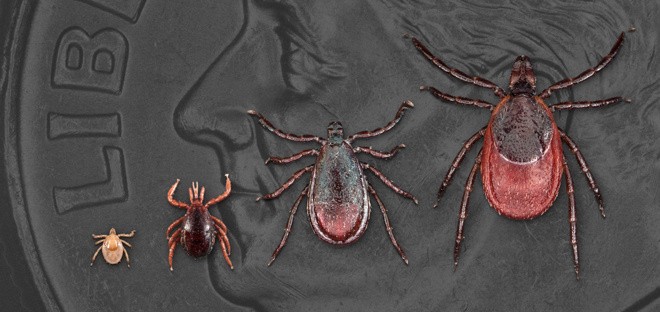
You might consider Justin Bieber as the lamest person in the world, but no one can deny that even non-fans panicked when the Canadian pop star revealed that he is suffering from Lyme disease. After all, it's the same complication that forced the pop-punk princess Avril Lavigne to stop performing for more than four years.
But what is Lyme disease? What is such a big deal about it that Lavigne was inspired to write a religious song to save her from it?
It all starts with a tick bite
Lyme disease is the most common bacterial infection induced by tick bites. The US Centers for Disease Control and Prevention estimated that at least 300,000 people were diagnosed yearly.
There are four species of bacteria which can cause Lyme disease. Two of these -- Borrelia burgdorferi and Borrelia mayonii -- are common in the U.S, according to the Mayo Clinic. These bacteria will grow in a tick and will be transferred to humans through their bites.
Lyme disease is common during spring and summer seasons -- the season when tick nymphs are feeding and people are most likely going to a forest stroll.
ALSO READ: Tick-borne Disease that can Cause Brain Damage Found in the UK for the First Time
Common symptoms
It will take at least three days before the early symptoms occur. These are fever, body aches, swollen lymph nodes, and fatigue.
But the most notable symptoms to look for is Erythema migrans (EM) rash, which appears on around 80 percent of the patients. It happens when the tick bite expands and began to look like a bull's eye. This rash is usually not itchy or painful but it is warm.
If left untreated, the infection will spread to other parts of the body, mostly joints, heart and nervous system. In severe cases, patients might experience temporary paralysis, confusion, and memory problems, due to the inflammation on the brain and spinal cord.
How to cure Lyme disease?
Since it is a bacterial infection, antibiotics works. Your doctor might ask you to take antibiotics up to 21 days, but some studies suggested that a 10-day course is just as effective.
For more severe cases, especially if the central nervous system has been affected, an injectable antibiotic is preferred and the treatment can last up to 28 days. It also normally takes time for you to fully recover, even after the infection was eliminated. You might also suffer from side effects like lower white blood count, diarrhea and superbug infection, so make sure you follow your doctor's advice.
Unfortunately, sometimes the symptoms will persist even if the patient is not infected anymore. Lavigne, for instance, said that her Lyme disease is a "life-long battle", indicating that she is among those unfortunate victims.
There is still no cure for Post-Treatment Lyme Disease Syndrome, but some patients got cured on their own.
How to prevent Lyme disease?
Like many bacterial infections, Lyme disease is preventable, and that is through minimizing exposure to tick.
But if going to the woods or any areas with high grass where ticks are often found, CDC recommended to cover up with long sleeves and pants and wear insect repellent with at least 20 percent DEET concentration. Then, remember to take a shower after.
Your pet might also bring the pest inside, so make sure you check them often.
There was a Lyme disease vaccine. However, the production was ceased in 2002 because of insufficient public demand.
© 2025 NatureWorldNews.com All rights reserved. Do not reproduce without permission.





